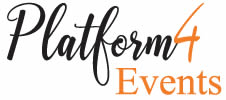Description
Adelaide Oval has long been one of Australias most recognisable and prestigious venues. Its prominent location as the centrepiece of a revitalised riverbank precinct, along with stunning panoramic views over the ovals hallowed turf, the city of Adelaide, St Peters Cathedral and beyond, provides a unique setting to entertain clients, celebrate milestones or network in style. Cricket was first played at the Adelaide Oval in 1873 and the first Test match was played in December 1884, but it was the infamous Bodyline Test in January 1933 that saw a record 174,452 spectators at Adelaide Oval to watch cricket. The more recent 2006-07 Ashes Test was also a major event with 136,7+61 spectators enjoying the five days of play. However, the highest single days attendance record for any sport played at the Adelaide Oval belongs to football with 62,543 people attending the 1965 grand final between Port Adelaide and Sturt. Australian football was first played at Adelaide Oval in 1877 and, since that time, 18 sports including archery, athletics, baseball, cycling, hockey, lacrosse, lawn tennis, rugby and soccer have been played at the Oval. The Adelaide Oval has also hosted visits by three future kings of England and Queen Elizabeth on the 1954 royal tour. Other state events held at the Oval include the memorial services for Dame Nellie Melba, Pope John Paul and former Test cricketer David Hookes. Some of the worlds best-known entertainers have performed at the Oval with The Rolling Stones, Paul McCartney, Elton John, Michael Jackson, AC/DC, Foo Fighters and Madonna all playing to capacity crowds. Adelaide Ovals iconic northern end. The Ovals distinctive Moreton Bay figs were planted in the 1890s and remain a historical backdrop to the northern end of play, as does the famous Edwardian scoreboard. Designed by architect Kenneth Milne, the scoreboard began service on 3 November 1911. The clock was added in 1912 and the wind vane in the 1930s. There are four levels on the inside connected by stairs. It is almost entirely mechanical using mainly original machinery. The only electrical items used on the scoreboard are the light bulbs indicating the batsman on strike, and the fielder who has fielded the ball. The board requires only two attendants for football but as many as six for limited-over and Test matches, but up to eight for T20 matches.

Add a review